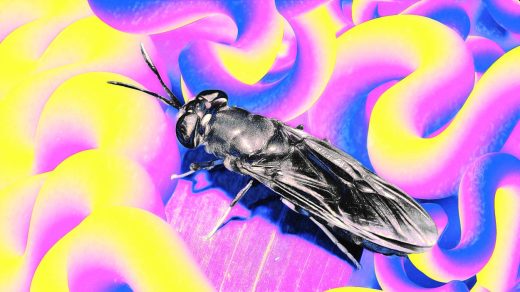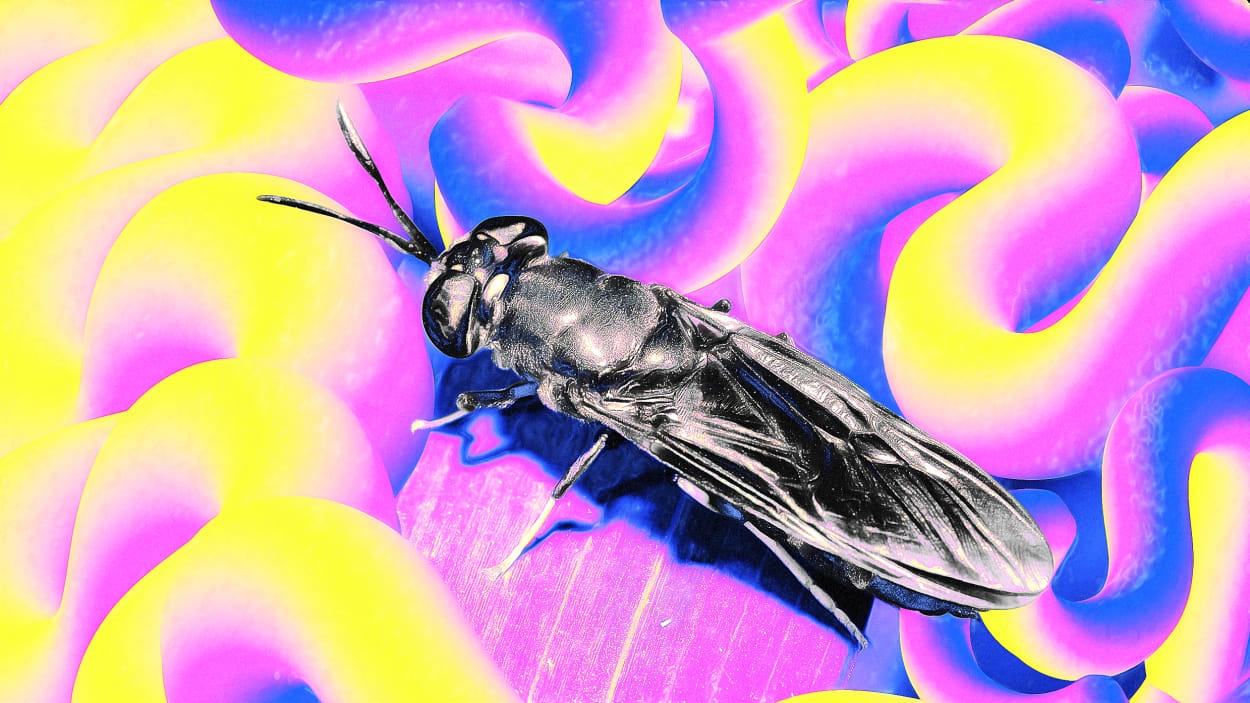Black soldier flies could be turned into biodegradable plastic
There’s a slight whiff of cannibalism in an emerging circular model for sustainable plastics. Insects may soon be used as materials for engineering bioplastics—before the next generation of insects eats their plastic kin and become plastic themselves.
A Texas A&M research team is studying how to make degradable bioplastics from black soldier flies, an abundant resource that otherwise goes to waste. The flies could help make products from packaging to medical dressings, all the while reducing the need for environmentally unfriendly synthetic plastics. The aim is to make the process fully circular: At the end of their lives, the plastics could be ingested by more flies, who’d then provide the new batch of raw material.
The team, which presented its findings to the American Chemical Society this week, is led by Karen Wooley, who has been working on developing bioplastics from natural materials for 20 years. But those substances, like sugar cane and trees, are precious resources that are also needed for necessities like food and fuel. It was a colleague at the university’s entomology department who floated an alternative material—flies.
Black soldier flies are already an agricultural commodity. They are cultivated widely for animal feed, becoming an increasingly popular alternative protein to fish meal and soy meal. The flies have good nutritional value from the food scraps they eat, which also helps do away with organic waste. “They’ll eat and eat and eat,” says Cassidy Tibbetts, a graduate student working on the project with Wooley.
Typically, however, only the larvae are harvested for feed. Once the adults mate and breed, farmers discard them. Those adult carcasses could provide the raw material for degradable plastic. “It’s literally garbage,” Tibbetts says. For her research, she picks up the dead adult flies from the lab of entomologist Jeffery Tomberlin, who studies the rearing and uses of the flies. “They quite literally vacuum them off the ground and throw them out,” Tibbetts says.
Back in Wooley’s lab, the team extracts chitin from the flies. Chitin is a strong, fibrous substance that makes up the exoskeleton armor of the flies. The chitin is derived by cleaning the whole flies, then drying and grinding them into a powder and bleaching them white.
From there, another graduate student, Hongming Guo, turns the chitin into chitosan, a more soluble form of chitin, and produces hydrogel, a polymer material that’s known for its water absorption and retention qualities. In Guo’s trials, hydrogel soaked up 47 times its own weight in a minute, versus 30 times for commercial chitosan. One possible application could be adding small, biodegradable hydrogel balls to crop soil to alleviate flooding, which is frequent in Texas. As the hydrogel balls break down, they could release their own mineral components as nutrients for the crops.
Researchers are looking into other plastic products as well, noting that chitin could be made into medical dressings, packaging and food wraps, and even paper from spinning chitin fibers. But they’ll have to consider how to scale up the process—and they’ll need a lot more flies. So far Tibbetts has been able to convert 200 grams (7 ounces) of flies—two to three Ziploc bags full—into about 8 grams (0.3 ounce) of chitin.
If the process can be scaled, it could not only reduce the number of petrochemical-derived plastics but also bioplastics that are made from valuable resources such as sugar cane, corn, and yeast. Black soldier flies use relatively little land and water for cultivation, which is much more cost efficient.
And the aim, ultimately, is to make the system circular. The bioplastics are biodegradable, but also likely ingestible by the flies themselves, giving new flies the nutritional sustenance to become the next plastics. The team is currently researching the digestibility of the bioplastic by literally feeding it to the flies. While all species are different, if the flies react positively, it could mean that other animals would also be able to digest such plastics, making it less dangerous when they accidentally swallow plastic waste, which happens frequently.
It’s an ongoing process. The flies aren’t picky eaters by any means, but there’s a limit. “They will eat just about anything,” Tibbetts says. “But they’re probably not going to want to eat just straight plastic.”
(19)



